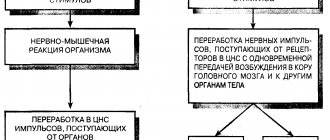All people want to be happy, joyful, enjoy every moment, see and feel the colors of life. Joy and positivity make our life bright, it is devoid of negativity and dullness.
But what is joy? You can read the definition briefly below. And you will also know where it comes from, and why it is so difficult for many to control their emotional state while remaining joyful. Why do some people look for it where there can be no talk of joy and do not notice its sources next to them?
Joy: meaning and synonym
What definition can be given to this concept? Joy is a source of strength, inspiration, muse, kind and bright energy that helps the heart live in kindness, warmth and peace with itself and others. This is the path to a competent and simple attitude towards life and all the things that happen in it, which are not always easy.
Synonyms for the word “joy” are “fun”, “rejoicing”, “delight”. This indicates that joy helps us to be more optimistic, happier, which means that it is a source of strong energy.
Joy is a feeling of inner bliss and pleasure.
How to determine joy by facial expression?
Of course, determining a person’s happy mood by laughter is not difficult. When joy is experienced silently, it is also quite easily determined by facial expressions, but the exception is combinations of this emotion with others.
A person’s joyful mood is primarily indicated by the characteristic eyelids and lower area of the face. The eyebrow-forehead area is not always involved in the facial ensemble of the emotion of joy.
The lips are characterized by a position with drawn out and slightly raised corners. When smiling, a person can either keep his lips closed or open his mouth slightly, exposing his teeth. The display of teeth in a smile may be limited to the upper incisors, or may include the lower and upper teeth along with the gums.
The more intense the smile, the more pronounced the nasolabial wrinkles become, running from the wings of the nose to the lower area of the face. Also characteristic is the raising of the cheeks, which makes the smile wider and facial folds more distinct. A pronounced smile significantly narrows the shape of the eyes.
The lower eyelids are also actively involved in the emotion of joy. The skin underneath is tightened in such a way that so-called “eye spots” are formed in the outer corners of the eyes. “Crow’s feet” are characteristic “fun” wrinkles that look like rays. With age, the “paws” become more pronounced, while in children they may not be present at all.
Why do people need joy?
Joy is one of the main positive human emotions. A person needs it for the following reasons:
- Joy is a good indicator of the right choice. When a truly competent, evaluated decision is made, a person cannot be sad, because he does not go against his conscience, against his moral principles and values. You immediately feel a surge of strength. If something goes wrong, incorrectly, then all the joy immediately disappears.
- Joyful people are always liked more by others. Try to evaluate for yourself a gloomy person who always complains about life and a person who shines with a smile and radiates positivity. Which of them would you most like to be in company with? The answer is obvious.
People who are able to be joyful even in difficult situations are truly strong and intelligent individuals! This is always immediately felt and visible almost to the naked eye. So your, if not constant, then frequent joy is an indicator of moral strength and intelligence.
What is the source of joy?
Every person has their own source of joy. So, for some, buying an expensive foreign car, vacationing at an expensive resort, a chic blonde or a blonde nearby, an expensive phone, jewelry is the reason for happiness. Another may be overwhelmed by unexpected joy, but so sincere and strong for completely different reasons - the sun emerging for the first time during the gloomy winter days, the smell of flowers, the smile of a child, hugs, warm memories, laughter with friends. Everett Sjostrom said a wise thing: “It is important to enjoy the process of life, not the achievement of its goals.” And little things are this process of life, so it is invaluable to learn to enjoy insignificant things and notice them.
Different sources of joy are explained by the fact that all people have different values in life, but the most important detail in this is the ability to value. If you cannot appreciate what you have now, you will never understand what the real joy of life is! If a person has learned to love every day of his life, people, communication with them, he will know joy and happiness in their full depth. If some things are not valuable to you, then they will be closed as sources of joy until you reconsider your views.
But it is necessary to set priorities correctly. It is important to value everything equally because if you deprive yourself of one part of your life, you will not be able to succeed in another or fully enjoy other things. Learn not to lose the value of things, and you will never be able to remove joy, happiness from your days.
What types of joy are there?
At this stage of time, the following types of joy are distinguished:
- Dark joy. That is, the moment when a person takes pleasure in doing bad things to others, no matter whether they are close or strangers. In other words, extracting joy from someone else’s grief and difficulties. If you experience positive emotions when you see someone else’s misfortune, then you can safely draw conclusions about problems with self-esteem.
- Nasty, dishonest joy. The feeling that a person experiences when he does something vile, for example, he spread false dirty gossip, and everyone believed in it - joy, and if at the same time it caused a wide response from society - he is simply in seventh heaven. He stole an item and went unpunished, deceived, betrayed a loved one who did not know about it. If all this causes joyful emotions, then this also has to do with the internal problems of the individual. Such joy has a very close connection with darkness.
- Instant but intense joy. This happens at every step, which is very good: a long-awaited purchase, a birthday, victory in competitions, a new achievement, a wedding and many other events to which you attach great importance. These are all excellent and quite important things in the life of every person, but, as a rule, they are short-lived.
- Lasting joy. It is usually deep, spiritual. For example, sincere love for a person, parents, friend, world, true friendship, gratitude. And also, which is important, you need to be able to not only receive good from everything around, but also give this good. Everything that you give into the Universe comes back to you in threefold form.
In order for that same sincere, unexpected joy to visit you more often, you need to stop accumulating negative emotions, experiences, resentments, anger, you need to be able to radiate positive energy. You need to train for more than one day, but if you succeed, then you will be able to accept the joy that the Universe sends every day.
Therefore, the quality and duration of joy directly depend on a person’s emotional state, as well as on the efforts he puts into it.
A complete list of positive human emotions
So, we will look at what emotions a person has in our complete list. There will be a description in only some of them, so you can understand what we are talking about. I will also note that the italicized ones will be the basic emotions that were identified by the famous psychologist Izard. I don’t take Paul Ekman’s classification, because the only positive thing in it is joy. I really want to expand the basic list a little! Go.
- Tranquility is a state of peace and balance.
- Relaxation is that feeling when you don’t owe anything to anyone, and you don’t owe anything to yourself either.
- Contentment is a feeling of complete contentment with the moment.
- Clarity – there is no need to worry or think about something.
- Definition.
- Flexibility is the ability to accept changes in life without harm.
- Smoothness.
- Susceptibility.
- Warmth – a feeling of joyful affection.
- Adoption.
- Empathy is the ability to understand what another person is feeling.
- Sympathy.
- Compassion.
- Tenderness is affection with sensitivity and a supportive attitude.
- Love.
- Gratitude is a feeling of appreciation for something good.
- Trust is a feeling of complete security.
- Caring is the need to look after someone.
- Location – favorable attitude.
- Kindness.
- Cheerfulness.
- Kind irony is an affectionate and friendly joke.
- Confidence.
- Stability is the ability to maintain one's current state.
- Readiness.
- Composure - “everything is under control.”
- Sexuality is a person’s experiences associated with the manifestation and satisfaction of sexual desire.
- Passion is a strong attraction to the object of passion or inexhaustible enthusiasm.
- Grace is subtlety and a sense of beauty, proportionality in everything.
- Ease.
- Freedom.
- Liberation - a person practically does not criticize his behavior.
- Rejoicing is a high degree of manifestation of joy and triumph.
- Joy.
- Happiness.
- Bliss is a state of complete happiness.
- Ecstasy is a passionately enthusiastic state.
- Serenity is a calm attitude towards the world, acceptance of all its manifestations.
- Kindness - mercy and kind attitude, kindness.
- Security is a state of reliable security.
- A sense of security is a feeling of complete security, “soil under your feet,” a calm life and development.
- Prudence is an attentive and careful attitude to upcoming events.
- Attentiveness.
- Hope.
- Premonition - intuitive forecasting.
- Anticipation is a mental feeling of something, a preliminary experience in the imagination.
- Interest.
- Openness is a characteristic of a noble and generous person who does not feel the need to hide his deeds and thoughts.
- Reverence is deep reverence.
- Tenderness.
- Delight.
- Devotion.
- Commitment – craving, inclination, predisposition.
- Perseverance is the ability to achieve a goal.
- Perseverance is a persistent pursuit of something.
- Intention.
- Aspiration.
- Rapidity.
- Swiftness is the ability to perform the maximum number of actions in the minimum time.
- Respect.
- Self-respect.
- Self-esteem - awareness of one’s worth, respectful attitude towards oneself.
There are also neutral emotions, the “positivity” of which depends on the context of events:
- specificity,
- conviction,
- directness,
- inflexibility,
- softness,
- regret,
- fluidity,
- repentance,
- pliability,
- light sadness,
- a pity,
- pride,
- seriousness,
- astonishment,
- detachment,
- immediacy,
- dispassion,
- naivety,
- impartiality,
- trembling,
- abstraction,
- caution,
- thoughtfulness,
- daydreaming - especially pronounced in women.
What is necessary for the continuous growth of joy?
In order to learn to rejoice more, you should consider the following factors.
We will rejoice when we learn to be grateful. Learn to appreciate what you have, and you will never be sad over little things again.
You should stop worrying about the fact that something might be wrong with you. It’s enough just to stop comparing yourself to others, stop worrying about other people’s opinions. It’s better to stop and analyze what will happen to you if suddenly some passer-by forms the wrong assessment about you. A joyful and happy person, satisfied with life, will not attach any importance to this. This is freedom - to be yourself and not be afraid that you will be judged, your views and point of view, values will be challenged. This is purely their business. Just move on.
It is very important to find the positives in everything that happens to you. How true optimists do it. Of course, everyone has periods when, it would seem, nothing good can be seen at all. But every situation has many sides, and having looked at several and understood them, you will definitely find something good that you can rejoice at. You should always carry a feeling of happiness in your soul, then in reality it will not keep you waiting. One can cite the words of Lucius Annaeus Seneca as proof of this: “He who knows what to rejoice at has reached the top.”
Communication with others helps a lot. Try talking for a couple of minutes about a completely ordinary topic with a complete stranger for no particular reason. Perhaps you will make new friends. In any case, meeting new people always brings positive emotions.
Do what makes you happy. Immerse yourself in this headlong, feel yourself in this state and keep this feeling within yourself. For everyone it can be completely different things. Perhaps you feel several times better when you dance, play sports, or, conversely, sit for several hours a day, putting together complex puzzles, solving logic problems, or playing chess. The main thing is to find this hobby and enjoy it. Joy will always be present when doing what you love.
In both sadness and joy, be simpler and approach everything with humor. Sometimes it's worth being a child. Taking things too seriously has never made anyone happier.
How to respond to those who want evil rather than good?
In both sorrow and joy, do not pay attention to ill-wishers. Just go your own way, proving your point of view to everyone by striving for a goal, by actions, and not by retaliatory aggression. Enjoy every moment of life.
If you learn to understand the nature of people, their motives, views, body language, then it will be easier for you to find the key to them and, of course, you will know how to please them. As you already know, by bringing joy to people, you yourself become a little happier.
How to learn to look at the world positively?
One technique can be the child's gaze. Look at everything through the eyes of little children. They truly know how to see the beauty in every thing. They know how to create unexpected joy almost out of nowhere and spread it to everyone around them.
Children are uncontrollably happy about the snow, because then their parents can ride them on a sled.
Kids enjoy the heat because then they can play, douse themselves with water, and ride a bike. These are the teachers we should really learn from.
A few more words about cheerfulness
Let's look at the definition in more detail. Cheerfulness is:
- the ability to see the positive in everyday things that few people bring joy, for example, in the early morning, in a mug of tea, in rain and snow;
- the ability to not lose heart in difficult situations;
- a friendly perception of life, whatever it may seem at the moment;
- the ability to trust the future without worrying about it;
- the ability to understand that life is the most valuable gift a person has;
- the ability to be happy here and now, without attachment to the past and unnecessary anxiety.
Joy: Quotes about Joy
There are many people in history who knew what joy was and tried to share it with others:
- “You must always be joyful. If joy ends, look for what you did wrong” (Lev Nikolaevich Tolstoy).
- “If you have mastered the art of enjoying every moment, then you have learned a lot” (Azad).
- “There is pain and sadness in this world... But there is much more joy and love in it!” (Kubo: Legend of the Samurai).
Having understood what you need for joy, good health, what things and people evoke the most pleasant emotions and states, what hobbies make you feel on top of the world, in seventh heaven - strive for them, do everything in your power.
Still, joy and happiness are things that absolutely everyone can achieve. They make our lives much more pleasant, bright, filled with moments that we want to live again and again. Be strong individuals, share optimism and enjoy even your smallest joy!
Manifestation
Let's tell you how optimism manifests itself in everyday life.
- A cheerful person is always surrounded by people. They feel his positive energy and warmth of communication. An optimist not only always smiles, but also charges those around him with a good mood.
- An optimist knows how to maintain composure in stressful or extreme situations, when a pessimist panics and loses control.
- Cheerfulness is the best medicine for diseases, even if they are considered serious or incurable. Getting positive emotions and joy every day, as well as believing in recovery, even helps cure cancer. One of the participants spoke about this in the film “The Secret”. A striking example is Louise Hay, a famous book author, a woman who independently cured herself of a cancerous tumor.











